In the program “School of Repair” on TNT, often liquid wallpaper is used to decorate the walls of children's rooms and bedrooms. We have no doubt that for the interiors of residential premises, this is really a good solution, but does it withstand the extremely difficult conditions of the kitchen? Let's understand with the help of an optional guide in questions and answers.
Question 1. What are “liquid wallpapers”, what do they look like and why are they called that?
Silk plaster or so-called. “Liquid wallpaper” is an amazing coating that looks like both wallpaper and decorative plaster, and on the paintwork. However, on the wall it looks like a stone, and if you take a closer look, it completely resembles a knitted colored felt. The secret of this finish "wallpaper" and cunning name lies in the composition and application technology. They consist of: a bonding part, cellulose fibers, cotton and / or silk, dye and decorative additives in the form of colored flocks, marble or quartz chips or glitter from mica. The mixture is sold in bags in a dry form, but it is diluted with water for application to the wall, and then spread along the wall almost like plaster.
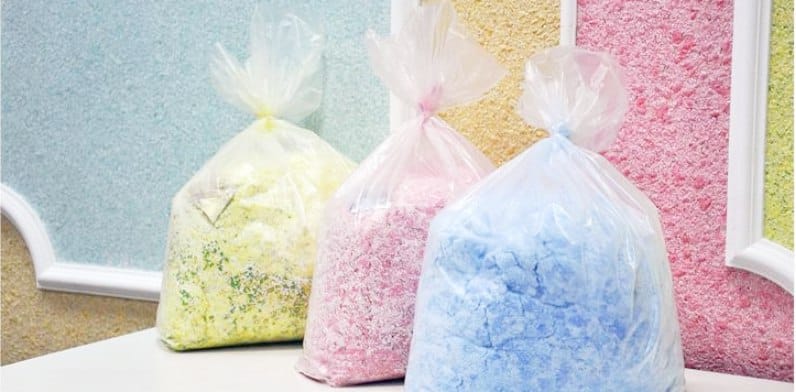
Question 2. What is the point? What are the pros and cons?
- The uniqueness of the liquid wallpaper is that they can be independently restored in just 5 minutes with the help of water alone. To do this, you just need to wet the damaged fragment of the coating, scrape it off with a knife as shown in the photo below and make a patch of the mixture that was stored in advance. Soaked "cake" will only level with a spatula and the wall will be fine again.
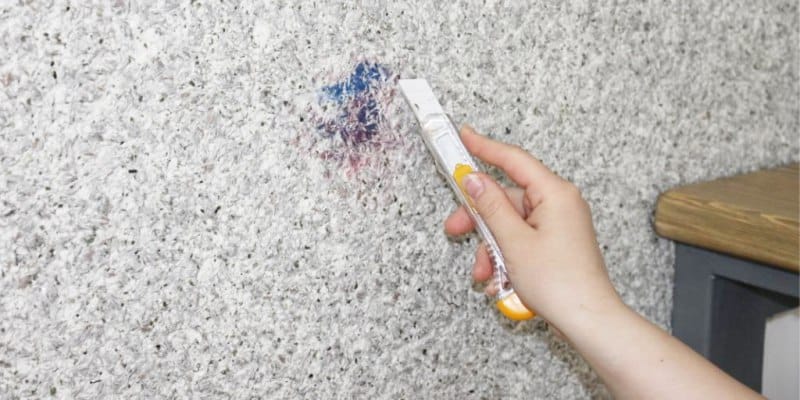
But this is not their only plus Here are 12 more arguments "for":
- Unlike conventional wallpaper, liquid does not absorb odors and does not attract dust, which is especially important for the kitchen;
- The composition of silk plaster is hypoallergenic and environmentally friendly (including bonding glue and water-based dyes);
- The coating is breathable;
- "Wallpapers" are beautiful in appearance. You can choose from 100 different colors and textures, as well as create wall art compositions, three-dimensional panels or borders as in the following photos. If desired, they can be painted;
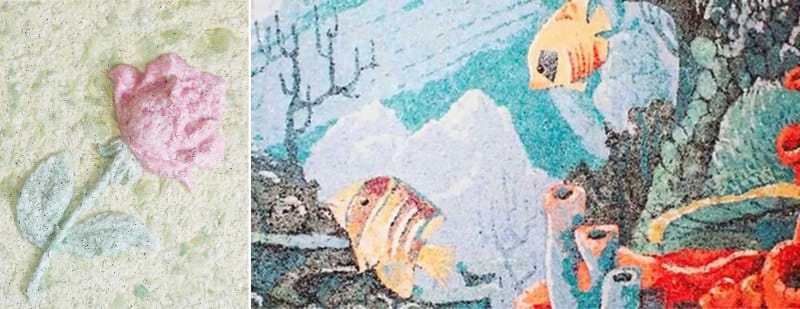
- Covering seamlessly, which also distinguishes it from wallpaper, in which the seams are a disadvantage;
- They do not require perfectly smooth walls and can trim them themselves, as well as fill small cracks;
- The application does not require skills, the mixture can fill small gaps (for example, near the platbands, windows, sockets, etc.), as well as decorate rounded surfaces, for example, archway. All work is done without dust, dirt and odors with a minimum of tools;
- Non-toxic when burning;
- Slightly increase the heat and sound insulation;
- Ideal for decoration in new buildings, as due to its elasticity do not crack due to shrinkage of the building;
- Relatively inexpensive;
- Serve about 10 years;
- Light resistant, as the fibers are dyed.
Unfortunately, disadvantages of liquid wallpaper is very significant:
- The main argument "against" the use in the kitchen - they are afraid of water and do not allow wet cleaning;
- On the already finished wall may appear yellow spots and stains. This is due to the fact that the coating has a water base and, if there are nails in the wall or iron fittings hiding, and also, if its surface has undergone a variety of treatments, liquid wallpaper can become stained. However, unpleasant surprises can be avoided, how to do it - we will tell below;
- "Patches" after restoration may be slightly noticeable, especially if they are large;
- Although the technology of work is really available to everyone, but in order to evenly distribute the mixture on the wall, you will have to train and adjust to hold the spatula at the right angle and pressure. Moreover, they are difficult to apply to hard-to-reach areas, for example, behind a radiator;
- Another drawback is that the material consumption can be substantially more than what is stated on the package due to too thin / thick consistency, too smooth or uneven walls.
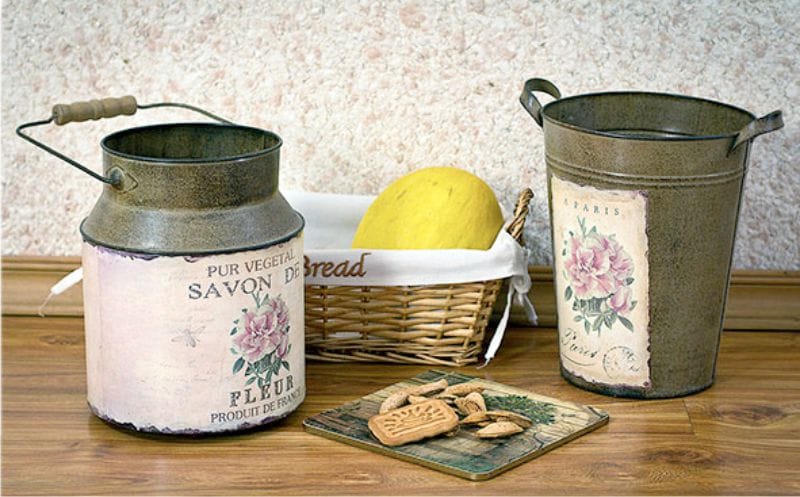
Conclusion: Can I choose liquid wallpaper for the walls or ceiling in the kitchen? In our opinion, yes, it is possible, but only not near the sink, stove and place of cooking. Ideally, "wallpaper" is to issue only one wall, for example, in the dining area. The second option is to glue them on all the walls, but cover them with a matte acrylic water-based varnish (in whole or in part). However, in this case, you lose the main bonus of silk plaster - the possibility of local repair.
Question 3. How to avoid the appearance of yellow spots? And how to remove them if they have already appeared?
To prevent the yellow spots from appearing, you need to prepare the wall well:
- Remove all the old finish, be sure to pull out all the nails, if any. If necessary, the walls should be covered with an antiseptic primer.
- Putty, wait until the putty is completely dry.
- Primed the wall 2-3 times with a special primer “Vodostop” (from Silk Plaster) according to the alternation principle: 1 time - vertically, 2 times - horizontally. Each layer must be given a time to dry for at least 3 hours.
- Finally, we paint the wall with white water-dispersion paint in 2-3 layers, also alternating the horizontal and vertical painting methods.
Tip: Silk plaster should be applied with a plastic, not an iron trowel to avoid oxidation.
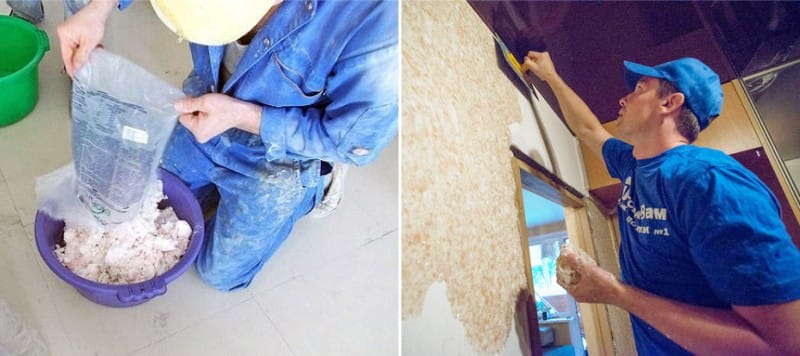
If the yellow stains have already appeared, then on the wall you just need to spray a solution of "Whiteness" and water diluted with the help of a spray gun:
- 1: 2 or 1: 1 - for white wallpaper;
- 1: 3 - for color.
Tip: first, this method is better to test on one section of the wall.
Question 4. How to clean the "wallpaper"?
Only dry cleaning 1-2 times is acceptable, for example, with a vacuum cleaner. If the liquid wallpaper is varnished, they can be wiped with a slightly damp cloth without cleaning agents and abrasives.
Question 5. Which manufacturer to choose?
Unfortunately, the producers of the original material quite a bit.
- The Russian brand Silk Plaster (the one that is used in the School of Repair) provides a choice of many different designs and colors at a relatively low price. Q1 m of ready-made economy-class cover “Master” costs from 39 rubles, that is 195 rubles. for one package mix. The most expensive coverage from Silk Plaster costs 505 rubles per square meter. m (1760 rubles for one package weighing 1 kg).
- Plaster of approximately the same quality and design is produced by the Bayramyx factory (Turkey) in the Silkcoat and Koza collection. The minimum price is 1990 rubles. for one package of a mixture weighing 1.2 kg.
- For the interior decoration of a premium class kitchen, you should choose the “wallpaper” of French brands. For example, Senideco Sakadeco with cotton or Fiber de Cotex (pictured below) from RMD.
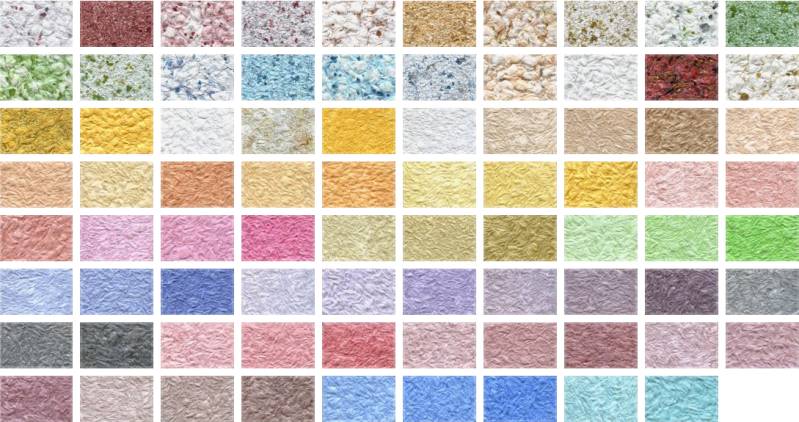
- How to choose the wallpaper in the color of the kitchen - 112 photos and 7 rules
- Choosing a wallpaper and background for the kitchen according to all the rules
- Decorating the walls in the kitchen with vinyl wallpaper - 6 steps from shopping to gluing
- Photowall-paper for kitchen - receptions and ideas of registration
- Create a unique design in the kitchen - correctly combine the wallpaper
- Non-woven wallpaper in the kitchen: help for the buyer and step-by-step instructions for sticking

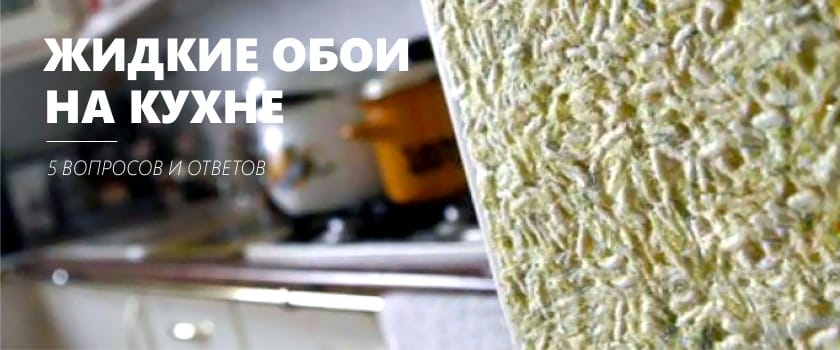
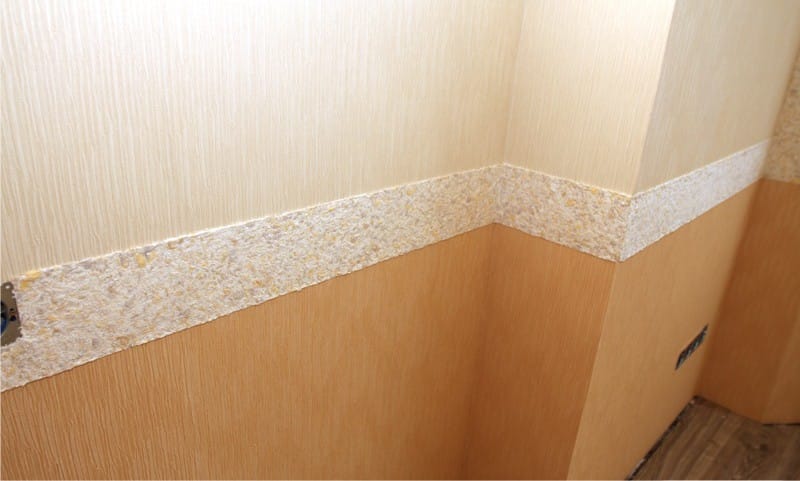
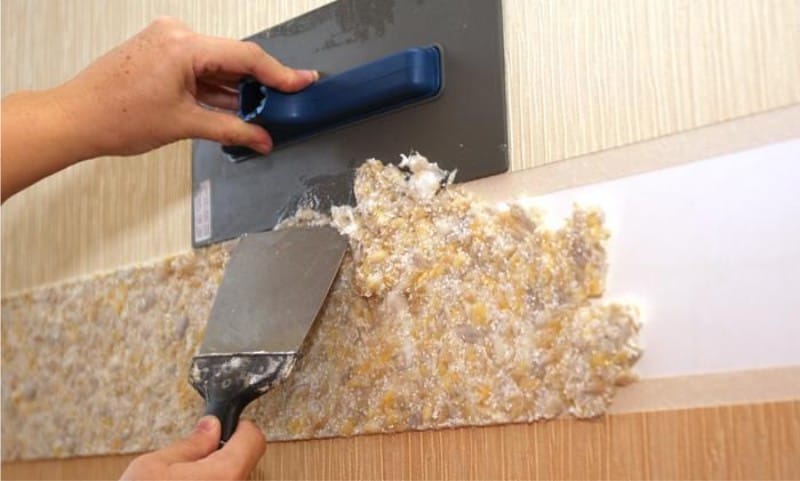

 (Rate the material! Already voted:9 average rating: 4,22 from 5)
(Rate the material! Already voted:9 average rating: 4,22 from 5)